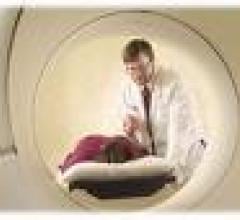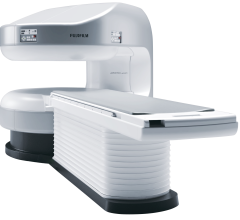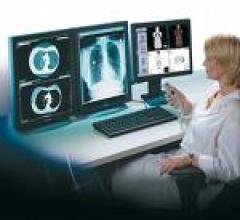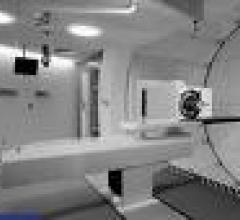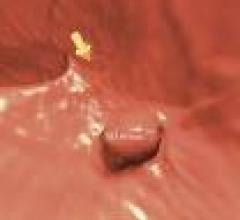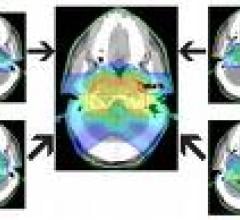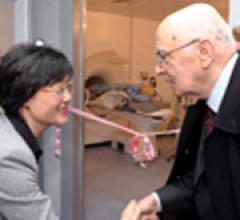February 17, 2009 - Updated guidelines of best practices identify using magnetic resonance imaging (MRI) to newly diagnose breast cancer and to make treatment decisions for breast cancer as a best practice, but not as a substitute for screening or diagnostic mammography.
February 17, 2009 - Cancer may well surpass cardiovascular diseases as the primary case of death in Europe by 2012; to prevent this from happening, cancer therapeutics have to shift in focus from the treatment of symptoms to offering a total cure, despite the complex, multifactorial nature of cancer indications, according to Frost & Sullivan.
February 16, 2009 - University Clinic Heidelberg, Germany reduces treatment times for the TomoTherapy Hi·Art system from between 40 to 75 percent, while at the same time improving plan quality by further reducing radiation dose to normal tissue.
Fujifilm’s APERTO Lucent is a 0.4T mid-field, open MRI system addressing today’s capability and image quality needs ...
February 16, 2009 - The deadline for submitting the application for a scholarship program for radiology residents interested in imaging informatics sponsored by the Society for Imaging Informatics in Medicine (SIIM) is March 2, 2009. For the fourth year, SIIM offers this scholarship to all trainees in North America who intend to pursue a career in radiology or imaging sciences.
February 16, 2009 - Researchers found modest benefits from an exercise program patients being treated with radiation therapy for prostate cancer underwent during treatment, according to a study published in the December 2008 issue of the Journal of Clinical Oncology.

SPONSORED CONTENT — Fujifilm’s latest CT technology brings exceptional image quality to a compact and user- and patient ...
February 16, 2009 - Varian Medical Systems will supply proton therapy equipment for the planned three-room treatment facility, which American Shared Hospital Services (AMS) is developing in the San Francisco Bay area.
SPONSORED CONTENT — Fujifilm’s latest CT technology brings exceptional image quality to a compact and user- and patient ...
February 16, 2009 - Researchers have also identified an even more accurate biomarker of prostate cancer: high levels of ionized serum calcium, according to studies findings out of Wake Forest University School of Medicine and the University of Wisconsin-Madison.
February 16, 2009 - The Centers for Medicare and Medicaid Services is accepting comments until mid-March on its proposed decision to refuse coverage of computed tomography colonography (CTC) for colorectal cancer screening. CMS said it is accepting comments on the cost effectiveness of screening CT colonography for the Medicare population if we were to alter our clinical decision.
SPONSORED CONTENT — EnsightTM 2.0 is the newest version of Enlitic’s data standardization software framework. Ensight is ...
February 13, 2009 - Emageon Inc. said today that it has received the $9 million that had been placed in escrow with The Bank of New York Mellon by Health Systems Solutions Inc. in connection with the parties' merger transaction; the escrowed funds became payable to Emageon when the merger was not consummated before the close of business on Feb. 11, 2009.
February 13, 2009 - American Shared Hospital Services (AMS) said that it is developing a proton beam radiation therapy (PBRT) facility in the San Francisco Bay Area.
February 13, 2009 – New research findings out of Wake Forest University School of Medicine and the University of Wisconsin may help provide some direction for men diagnosed with prostate cancer about whether their cancer is likely to be life-threatening.
Did you know that approximately one-third of all the data in world is created by the healthcare industry and that ...
February 13, 2009 – Toshiba America Medical Systems launched the Aquilion Premium CT system with the capability to cover up to 8 cm in a single rotation. The Aquilion Premium rounds out the company’s CT portfolio and is also field-upgradeable to an Aquilion ONE.
February 13, 2009 - The first permanent installation of the Aurora Dedicated Breast MRI System at the Istituto Nazionale Tumori Giovanni Pascale Hospital in Naples, Italy.
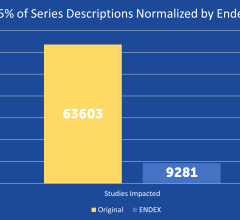
SPONSORED CONTENT — EnsightTM 2.0 is the newest version of Enlitic’s data standardization software framework. Ensight is ...
When does the imaging clock start ticking? Is it when an image is taken in the scanning suite or when it reaches the PACS in the reading room? According to a new study on imaging workflow, the imaging loop begins when the physician orders an imaging exam and only ends when the results of the test are communicated to the doctor.
As radiology workflow needs change, so too do PACS. From servers to software, PACS has moved from a thick-client solution with proprietary coding and dated software to a standards-based, open architecture system using off-the-shelf hardware.
Policy makers talk about improving the healthcare system by cutting costs. But all too often, as we have seen recently with the Deficit Reduction Act of 2005, this approach comprises patient access to care. However, cutting costs and improving quality do not have to be mutually exclusive.
Fewer topics in computed tomography (CT) are hotter today than lowering radiation dose. From mainstream media articles on radiation exposure to conference sessions on dose-lowering techniques to new ultra-fast systems designed to reduce exposure, healthcare has put a premium on this issue.
The number of new clinical applications for positron emission tomography (PET) and PET/CT are constantly unfolding in new disease areas, and, subsequently, PET procedure volumes are increasing at unprecedented rates.
While gated imaging has made significant strides in improving precision and accuracy in delivering radiation dose, the radiation oncologist’s bane still remains how to avoid radiating surrounding healthy tissue.

 February 16, 2009
February 16, 2009 
